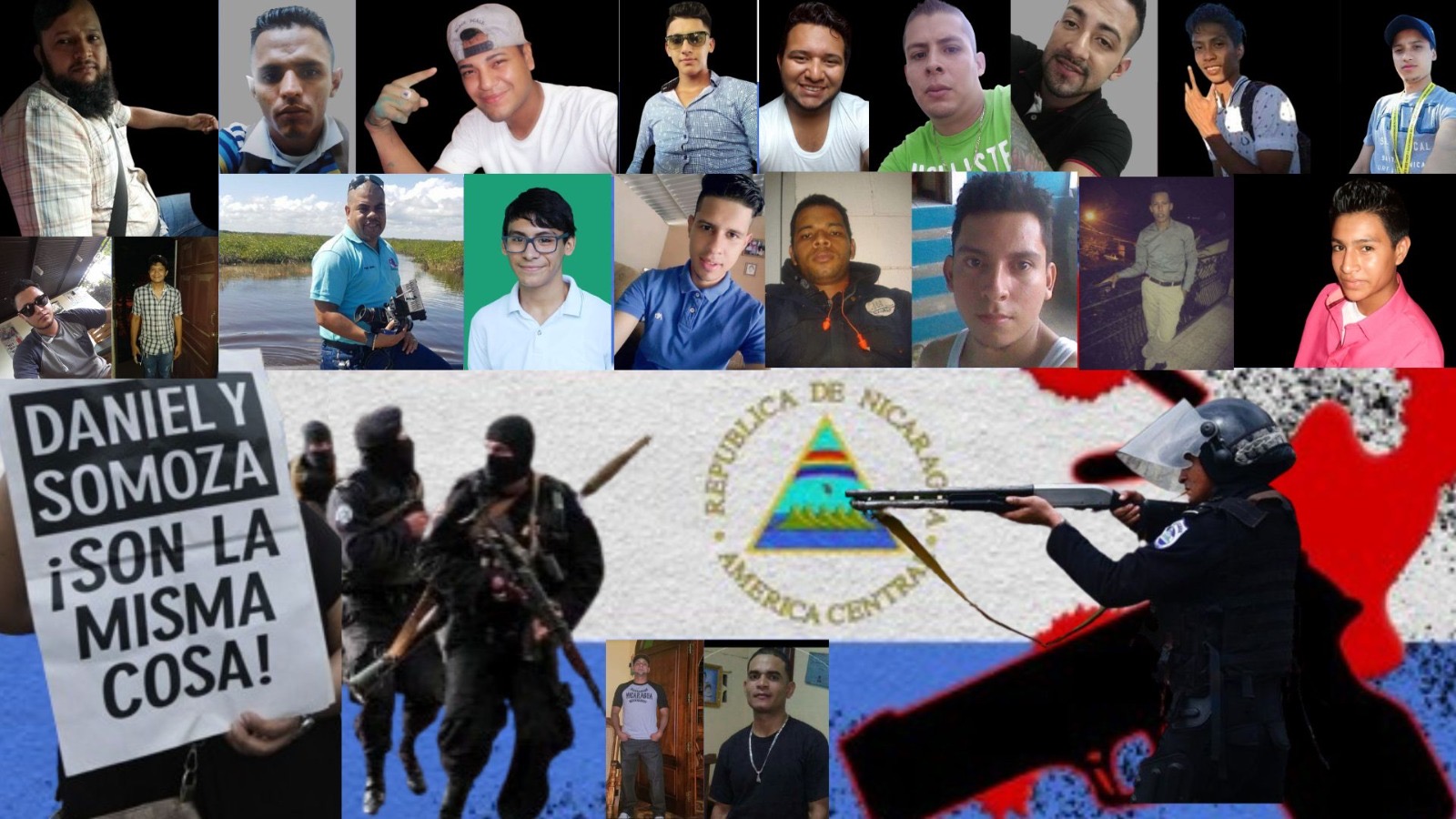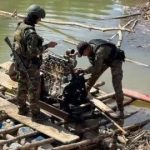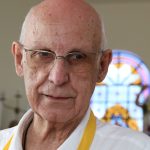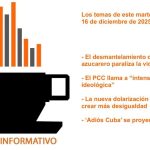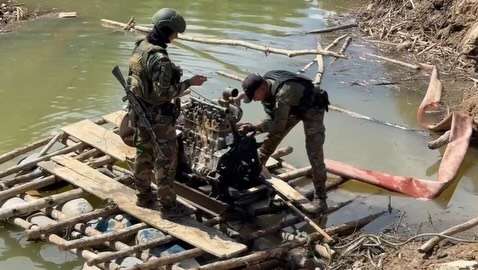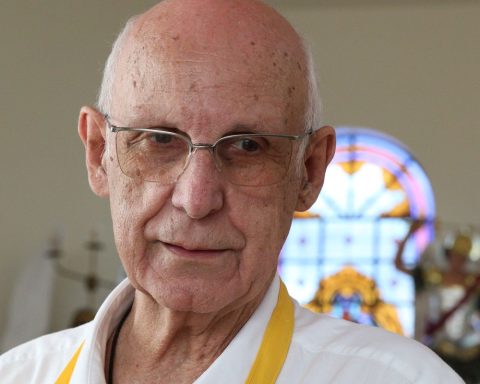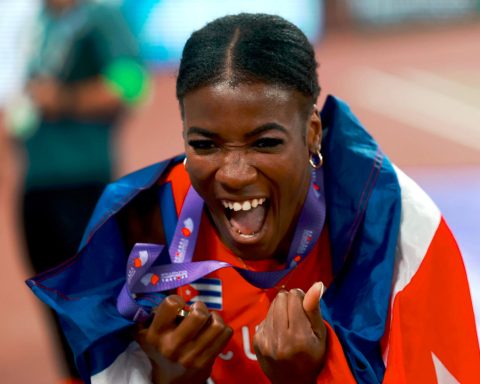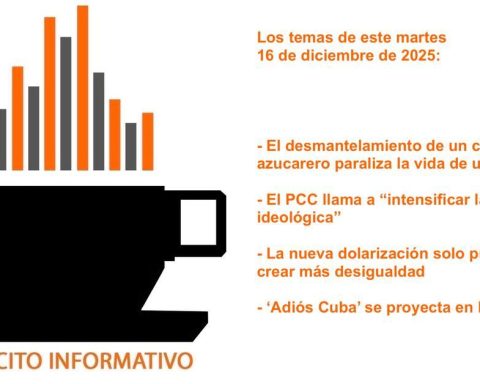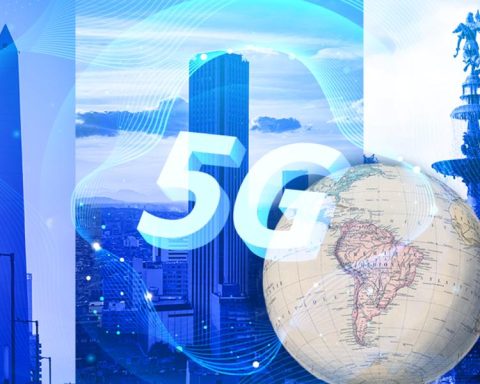Nicaragua experienced a civic awakening in April 2018. Young people protested in the streets at the beginning of that month against the ineffectiveness of the dictatorship of Daniel Ortega and Rosario Murillo to address the fire in the Indio Maíz Biological Reserve, and discontent was added to this demand. even more capital: some reforms to social security that were not consulted.
The inaction of the regime led young people to take over the main streets of León and Managua. Then the popular expressions were replicated in all the departments and the two autonomous regions of the Central American country.
Related news: Journalist Ángel Gahona was one of the seven murdered on April 21, 2018
The state response to the demonstrations was repression. Rosario Murillo gave the order “let’s go with everything” and the dead began to be counted. These are the victims of the first three days of citizen protests after April 18:
April 19th
Darwin Manuel Urbina Urbina. 29 years old, worker. He was the first victim of the violence with which the students who began the April protests over the reforms to the Social Security Law were repressed.
He was murdered in the UPOLI sector, he was not a student, but a young worker, who like many other residents born and raised in the nearby neighborhoods joined the uprising.
Richard Eduardo Pavón Bermúdez. 17 years old, student. He was murdered in Tipitapa. After leaving classes Richard joined the march that headed towards the Mayor’s Office organized to reject the reforms to the Social Security law. A few meters from there he received multiple shotgun blasts.
April 20th
Juan Carlos López Martínez, 24 years old. That day there were incidents between the police and protesters in Ciudad Sandino where Juan Carlos resided. He worked as a cell phone repair and maintenance technician. His main hobby was tattoos.
López Martínez received a gunshot wound to the chest that would have been fired from a motorcycle. The driver was wearing the Mayor’s guard uniform and with him was a police officer who would have fired the shot.
César Noé Castillo Castillo. He was wounded in Estelí on April 20 and died on May 12. The day he was injured he said that he was going to march for his rights and participated in the demonstration against the reforms to the INSS that gathered in the Central Park of Estelí.
Around 9pm he was shot in the back, affecting his lung and spine. The gun was fired from the Municipal Mayor’s Office of Estelí.
Orlando Francisco Pérez Corrales, 23 years old. He was a university student and was murdered in Estelí. After dispersing after the march in Estelí, the protesters advanced to the Central Park where they were ambushed. Orlando was hit by two shots in the chest, causing his death.
The autopsy carried out on May 3 and supervised by a forensic expert hired by the family concluded that the two shots were accurate and that the projectiles corresponded to a “high caliber” weapon.
Franco Alexander Valdivia, 24 years old. During the attack on the self-organized march in Estelí, Valdivia documented the attack through a video that was broadcast on social networks. Around 8 p.m. he fell, shot to the head. The murderers dragged his body, staining the terrace of the Mayor’s Office with his blood.
Raul Lopez Garcia. He worked at a design company. That day he was heading to the protests that were taking place around the UNI. At approximately 5:30 in the afternoon he was shot in the chest and leg with shotgun firearms. He underwent surgery, but the doctors were unable to save him; He died in the operating room at 8 p.m.
Marlon Manases Martínez Ramírez, 20 years old, participated in the marches along with his cousins and friends from Ciudad Sandino. He participated in the takeover of the UNI and was murdered inside the university. “We young people have to support the elderly in their demands,” he said when they tried to persuade him not to go out that fateful day.
The young man received a bullet in the head at the UNI, he was transferred to the Lenin Fonseca Hospital where he died at 8:30 at night that same day.
Hammer Jhoel García Salinas, 19 years old, was a Systems Engineering student at the Polytechnic University of Nicaragua (UPOLI). He was murdered in Tipitapa. He left his house at night in the City Hall area. The police and shock forces repressed the protesters with firearms.
Hammer ran for cover in front of the IXCHEN building. He was shot in the back and the exit pierced his heart, causing massive bleeding. The young man dedicated himself to his work, to church, and on Sundays he went to play soccer.
Moroni Jacob López García, 22 years old, was near the Managua Cathedral providing first aid to the young people who were protesting. He graduated with honors from the Fe y Alegría school in Ciudad Sandino, he entered university with a full scholarship to study medicine.
His family describes Moroni as an intelligent person with a great passion for study. He did gardening work and taught language and mathematics classes in the Mormon church, of which he was a member.
Michael Humberto Cruz Sánchez, 30 years old, showed solidarity with the young people, bought water and went to UPOLI to give it away. She wanted to help the students who were being repressed by the regime. In that place, the Police opened fire on the entrenched young people.
Michael was in an alley behind the UPOLI when he was shot in the chest. After 18 years without seeing his son, his mother returned from the United States for her funeral.
Álvaro Alberto Gómez Montalván. 23 years. He is the son of a historic FSLN militant. Álvaro lived in the Cuatro Esquinas sector and joined from the beginning the demonstrations held in Monimbó against the Social Security reforms. Police and paramilitaries attacked the craft market sector and Álvaro was shot in the chest.
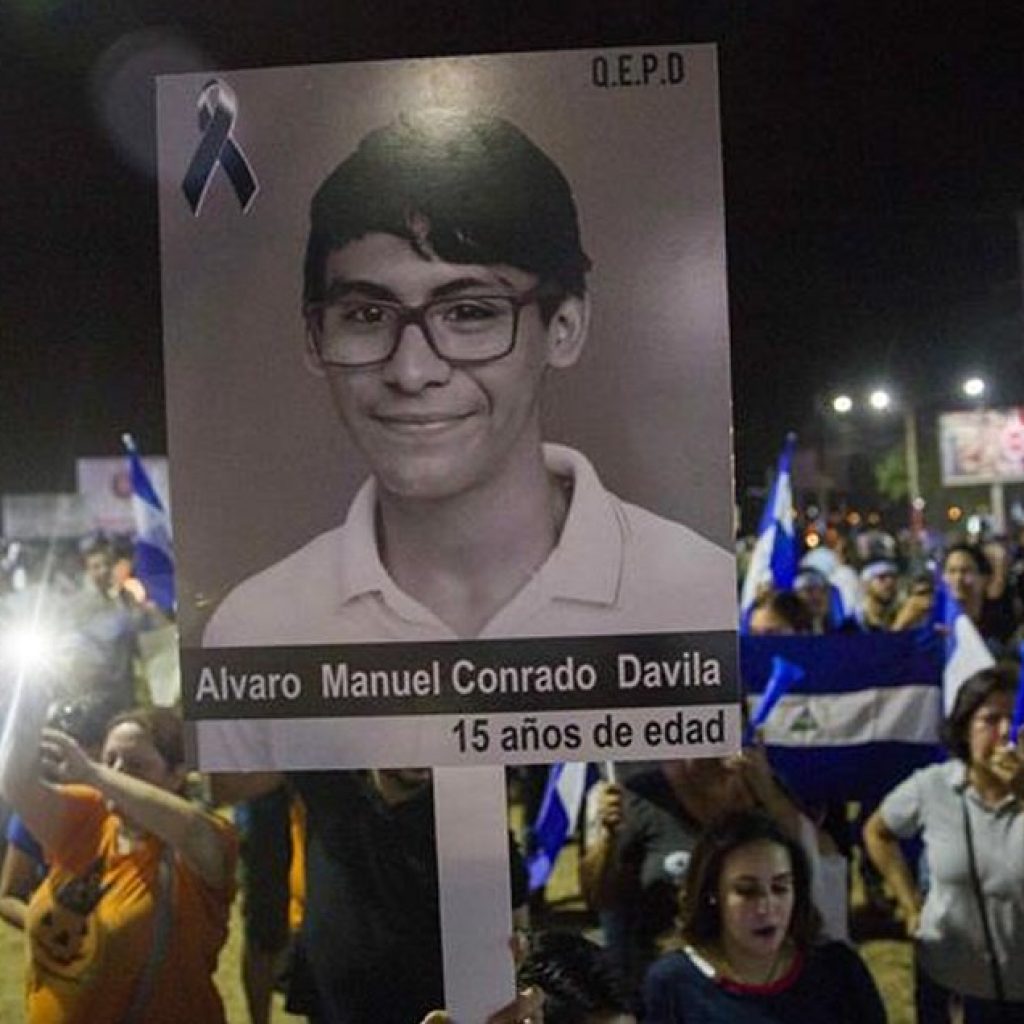
Álvaro Manuel Conrado Dávila. 15 years. The teenager bought water to take to the students who were at the UNI, he arrived nearby to distribute it to the students who were participating in the protests against the Social Security reforms.
Around 11 in the morning he was hit in the neck by a gunshot wound. After being wounded, his last words were “it hurts to breathe.”
Emilio Cadenas. 23 years. Student. He was murdered in León. On April 20, in the morning there was a large demonstration in the HEODRA sector and in the afternoon the CUUN fire occurred. On April 21, he notified his girlfriend that they found his burned and mutilated body at the Billar Lezama.
April, the 21st
Ángel Eduardo Gahona, 42 years. The night of that day, Gahona was broadcasting the demonstrations in Bluefields live from Facebook to El Meridiano. When he went to the municipal mayor’s office, he received two gunshots: one in the head and another in the arm, which pierced his chest.
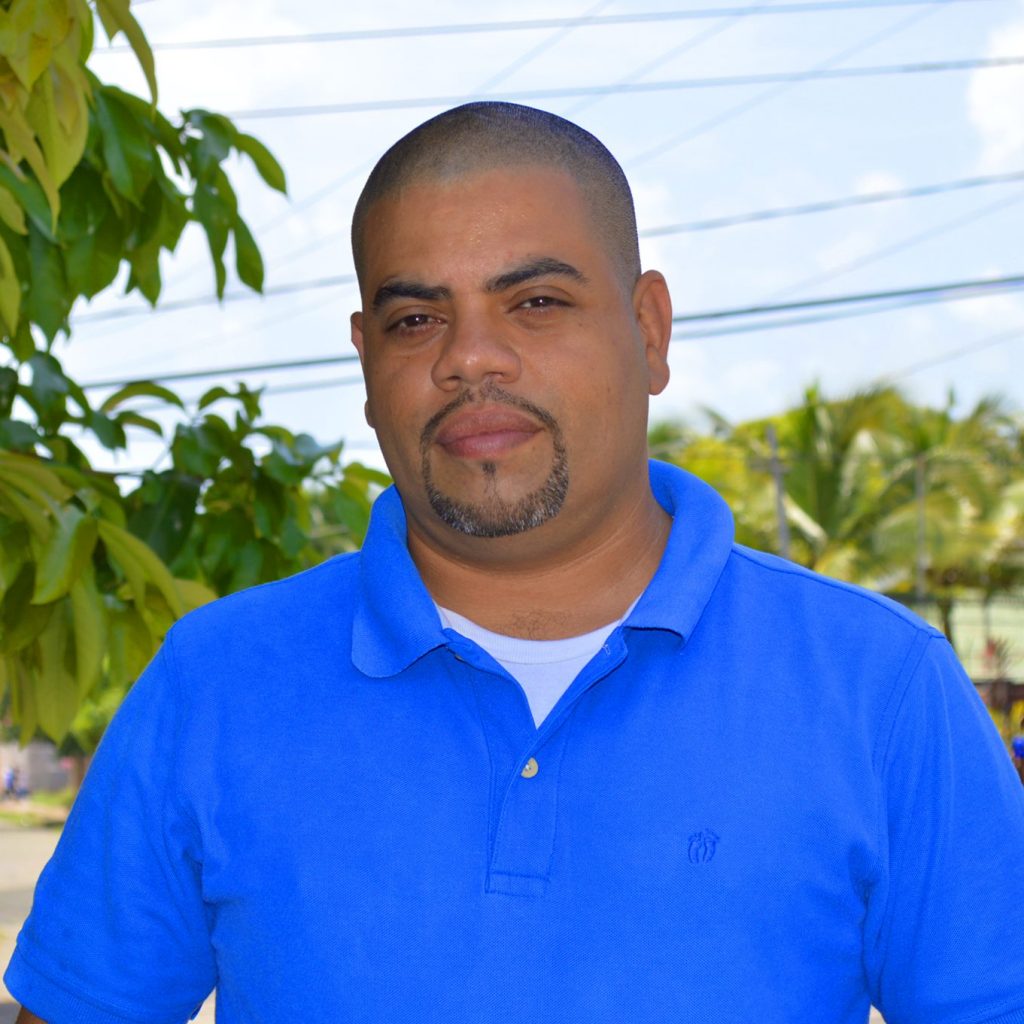

Danny Stalyng Rivas, 25 years old. He was wounded in Managua on April 21 and died a day later. Since April 19, he joined the protests that were taking place in the capital. On Saturday the 21st he participated in a demonstration near UPOLI. He was a religious young man and lover of justice. He participated in neighborhood activities and liked to play basketball.
He was shot in the abdomen when he was near the monument to Rafaela Herrera. His colleagues took him to the medical post set up by students within UPOLI and then transferred him to the Alemán hospital.
Marcos Antonio Samorio, 29 years. At night, in the Managua Mayor’s Office area, a protest against the Government was held, which was repressed by police officers, paramilitaries and members of the Sandinista Youth.
Marcos was returning from work but in the El Zumen sector the paramilitaries did not allow the route to San Judas to enter, which is why he got off and walked. A paramilitary van passed by shooting at those who were in the area, including Marcos.
Jeisson Antonio Chavarría Urbinto. 24 years. Around six in the afternoon, Jeisson joined a group of protesters in the Juan Ramón Padilla neighborhood of Ticuantepe and went with them to the Municipal Mayor’s Office. Jeisson was captured by paramilitaries and killed by one of them with a shot to the head, even though the young man had asked him not to kill him.
Carlos Manuel Lopez. 42 years. He went out with his family to look for food in the Fátima neighborhood in Masaya, when he started a shootout and received a shot in the back that pierced both of his lungs. After the half hour that the confrontation lasted and when the self-organized groups managed to disperse the paramilitaries, his family took the opportunity to remove the body and take it to a house where there was a doctor.
Lester Adam Vindel Picado. He was murdered in Managua, at approximately 8 pm when he was in the area of the Iván Montenegro Market. He received a gunshot that hit him in the right chest area. He was transferred to the German Hospital, where he arrived at 9 p.m. without vital signs.
Kevin Roberto Dávila López. He was wounded on April 21 and died on May 6. While participating in the anti-government protest near the UPOLI, he was shot in the head while documenting the police attack on it.
He was taken by ambulance to the Lenín Fonseca hospital. There he was found by his father in a coma after the medical staff repeatedly denied him his presence.
All these crimes and the more than 355 murders in the context of the protests remain unpunished. Local and international human rights organizations have called on the dictatorship to end the repression and for justice to be done, but Ortega and Murillo prefer to turn a deaf ear to the requests of democratic countries.
